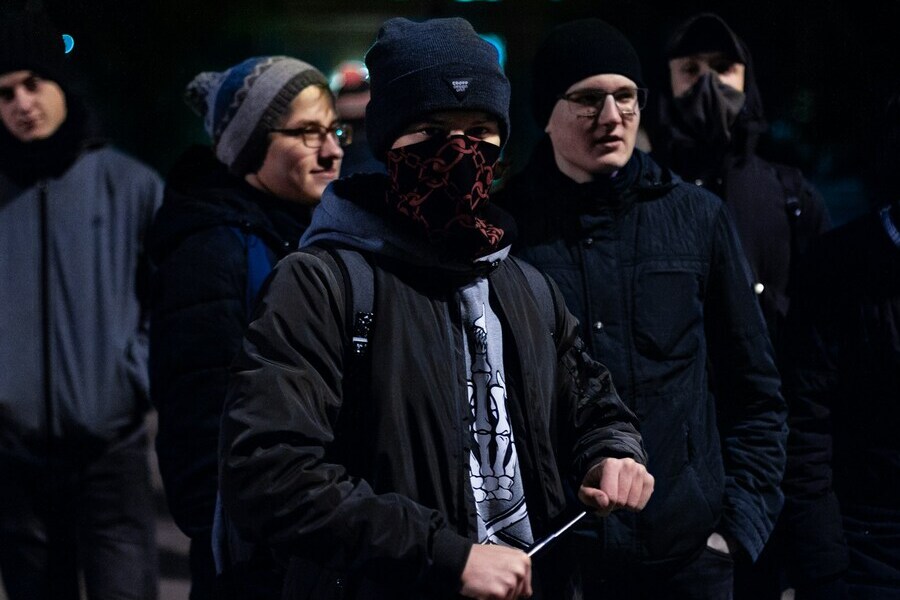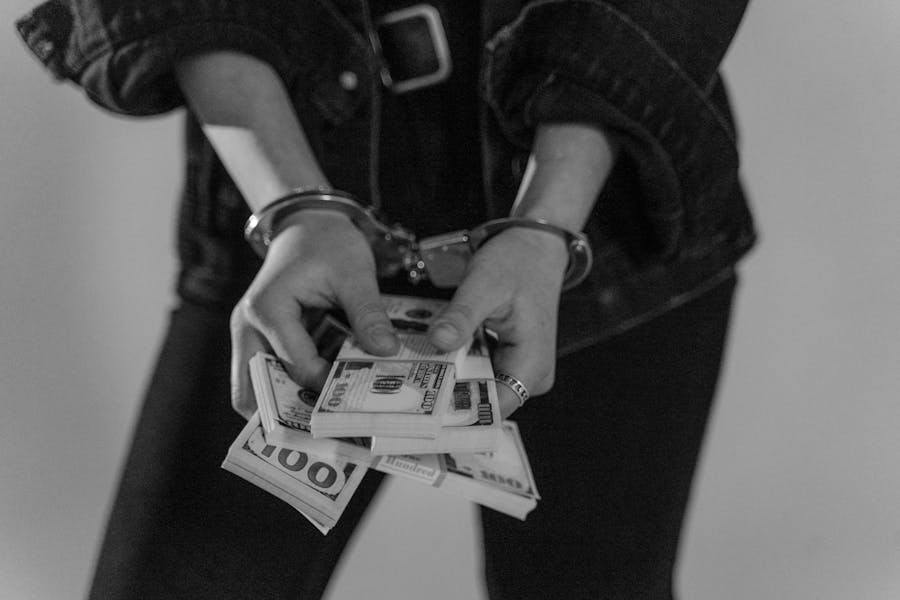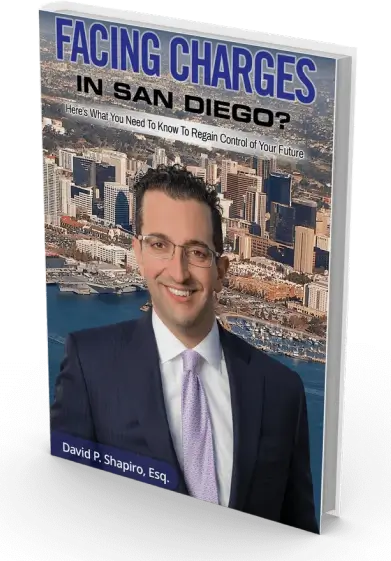What’s the Difference Between Being Charged With Assault vs. Battery in California?
Assault and battery crimes are the most common violent crimes here in California. These charges could range from misdemeanors all the way to felonies, where you could be subjected to a life sentence, meaning you could spend the rest of your life in prison if convicted of certain offenses.
Many people don’t really understand the differences and similarities, what the law requires, what’s at stake, and what some possible defenses are. In this video, we’re going to break down:
- The differences between assault and battery
- Available defenses
- Possible punishments
- Things you need to know if you or a loved one are facing these charges to protect your freedom and future
Whether you’re facing charges yourself, doing research for someone else, or just want to understand the differences, I hope you find this useful in understanding the distinctions between assault and battery here in California.
Assault With a Deadly Weapon
Let’s start with assault with a deadly weapon in California, found under California Penal Code 245(a)(2). This is simple assault with a deadly weapon, meaning you applied force or acted in a way that reasonably could be expected to apply force to another person while using a deadly weapon. You don’t have to actually make contact with that person.
Examples of deadly weapons could be:
- A bat
- A gun
- A knife
- Many other items
The reality is it’s the same offense as simple assault, just that you used a deadly weapon. There are other enhancements that get attached if you personally used the weapon. Now, I know that sounds kind of ridiculous – how could you assault someone with a deadly weapon if you didn’t personally use it yourself? Well, there could be accomplice liability, where you’re responsible for the actions of somebody else.
Assault with a deadly weapon is a serious charge. It is a strike offense in California and needs to be taken seriously. The best way to do that is to make sure you understand the law and protect your freedom by keeping your mouth closed and letting your lawyer do the talking for you.
Assault By Means of Force Likely to Produce Great Bodily Injury
Another assault charge that we see a lot, particularly in San Diego, is California Penal Code 245(a)(4). There was a time when assault with a deadly weapon and assault by means of force likely to produce great bodily injury were combined in one penal code section.
Now, 245(a)(4) is strictly limited to assault by means of force likely to produce great bodily injury. It doesn’t necessarily need to produce great bodily injury, just that an amount of force was used, or attempted to be used, that could have reasonably produced great bodily injury.
Where do we see 245(a)(4) allegedly committed? We see them at:
- Bars
- Sporting events
- Domestic disputes
It’s usually more than a simple shove, slap, or errant punch. It usually involves a pretty serious fight where people are throwing punches.
Great Bodily Injury Enhancement
We talked about how 245(a)(4) addresses intent to cause great bodily injury – it doesn’t necessarily require that great bodily injury be proven. But what if it is? Great bodily injury is defined under California Penal Code 12022.7. This isn’t something that’s just going to last for a couple of hours or even a couple of days – it’s something that will linger for a period of time. There’s a detailed definition under 12022.7 which outlines what is and isn’t great bodily injury.
If someone suffers great bodily injury as a result of an assault, what does that mean for potential punishment? How might a prosecutor and judge treat that situation?
It means a lot because if great bodily injury is found, you’re subject to at least a three-year additional term. It could be 5 years or 25 years, depending on who the alleged victim is and the extent of the injury. Equally important, if not more so, is that no matter the extent of the great bodily injury, if that 12022.7 allegation is found true, a felony becomes a violent felony, with all the consequences that come with that type of conviction.
Battery Causing Serious Bodily Injury
Let’s discuss two other offenses we see frequently in San Diego. Battery causing serious bodily injury can be found under California Penal Code 243(d). Often, we’ll see that paired with 245(a)(4), assault by means of force likely to produce great bodily injury.
At first glance, you might wonder about the difference. Under 243(d), it’s implied and assumed as charged that serious bodily injury was actually inflicted.
Remember, under 245(a)(4), it just has to be an assault with the intent to commit great bodily injury or likely to produce great bodily injury – not necessarily that the great bodily injury actually happened. If convicted of 243(d), that is a serious felony in itself and a strike felony, so there are important differences between 243(d) and 245(a)(4), although they’re often charged together.
Assault With a Firearm
Now let’s break down California Penal Code 245(b) – assault with a firearm. This is a very serious charge, particularly in San Diego. Under California law, assault with a firearm is when you start looking at double-digit sentences, let alone if you actually discharge the firearm.
The basic premise is that you assaulted someone and used a firearm to effectuate or facilitate that assault, but it doesn’t always require that you discharge the firearm. Assault with a firearm, in its most basic sense, could be just pointing a firearm at someone. If it’s loaded, that’s an additional penalty. If you actually discharge it, you’re talking about 5 years, 10 years, or 25 to life, depending on what happens.
If you just point a firearm at someone, whether discharged or not, that’s sufficient for assault with a firearm. However, if you just show someone a firearm without pointing it at them, that’s misdemeanor brandishing of a firearm.
You can see the big differences between misdemeanor brandishing, which could mean just a couple of months in county jail, versus assault with a firearm, where you’re looking at significant state prison time and a strike felony.
Common Misinterpretations and Overcharging by Prosecutors
We often see district attorneys come out charging our clients with 245(b), assault with a firearm. When we look at what’s actually alleged to have occurred, even just in police reports, it’s often not a 245(b) but, at worst, a brandishing under California Penal Code 417.
This distinction is significant because brandishing falls in the misdemeanor realm, not the serious strike felony realm. All those additional allegations attached to 245(b) – if the firearm is loaded, personally used – don’t apply to simple brandishing.
Sometimes witnesses say, “he pointed the gun right at me,” but upon further review, they’ll say it wasn’t really pointed at them – it was just visible, in their lap, or slammed on the table. That’s not 245(b), that’s, at worst, brandishing, which requires showing someone a weapon in a rude, threatening, or angry manner.
Negligent Discharge of a Firearm
Finally, let’s cover California Penal Code 246 – negligent discharge of a firearm. We often see this in situations where there’s a bar fight or argument, and someone tries to diffuse a potentially lethal altercation by firing rounds into the sky.
While that’s not assault with a deadly weapon, it is negligent discharge of a firearm – releasing or discharging a firearm in a negligent manner where someone could get hurt, even if that’s not your intention.
We also see this with accidental discharges while cleaning guns. Negligent discharge can be filed as either a misdemeanor or felony, with certain mandatory minimum sentences, but good mitigation arguments can go a long way toward securing a favorable outcome.
Effective Legal Defenses for Assault and Battery Charges
As for legal defenses to assault and battery charges, the first is factual innocence – it wasn’t me, I wasn’t there, I have an alibi. Maybe it’s a cross-racial identification issue, where someone of one race is trying to identify someone of a different race, which research shows reduces accuracy considerably. On the opposite end, you might have been there and did what you’re accused of but have a valid legal defense like self-defense or defense of others.
People often get themselves in trouble by talking to police or making public statements about why they felt they needed to do what they did. Sometimes the best defense isn’t claiming nothing happened – it might be acknowledging something happened but arguing it doesn’t meet the legal definition of great bodily injury, so it should be a simple felony or misdemeanor rather than a strike felony. Other times it could be an intent issue – it was an accident.
The most important thing when assessing viable defenses is not to close doors by trying to handle things yourself or talking to police without first consulting a locally experienced criminal defense lawyer who can prepare you properly and help you access the best defenses for your assault or battery charge.
Charged with Assault or Battery? Contact our San Diego Defense Team Today
If you or someone you love is facing criminal charges in California, swift action is imperative. The penalties can be life altering and long lasting. Give us a call today to set up a case evaluation with one of our attorneys and learn how to best protect your freedom and future. Too often, we see clients who “wait and see,” unsure of the legal landscape ahead, only for charges to escalate. They then find themselves backpedaling into a bad defense and an even worse lawyer. Don’t let that happen to you. Protect your freedom. Protect your future. Know your rights.
The contents of this article and blog are meant for informational and marketing purposes only and do not constitute legal advice. Viewing and/or use of the blog does not form an attorney-client relationship. No statements in this post are a guarantee, warranty, or prediction of a particular result in your case.









